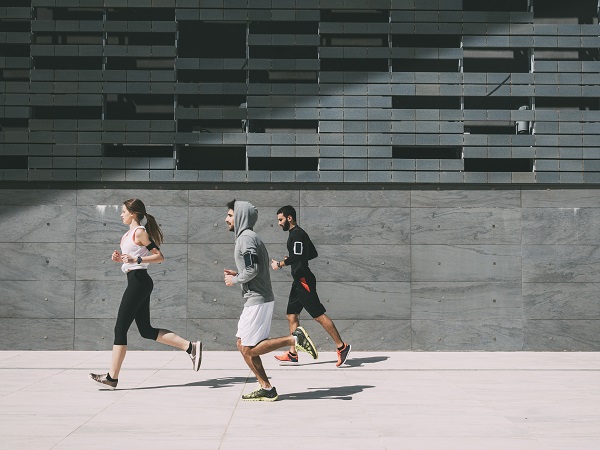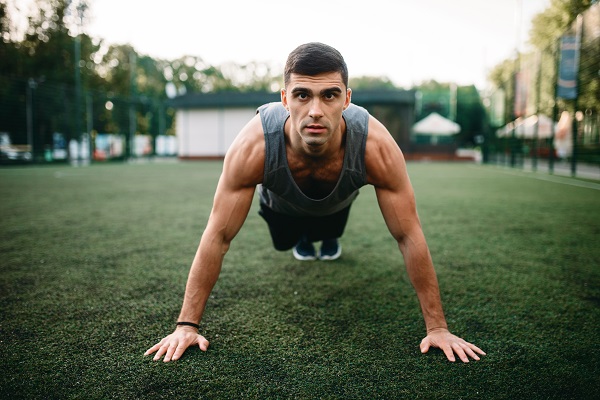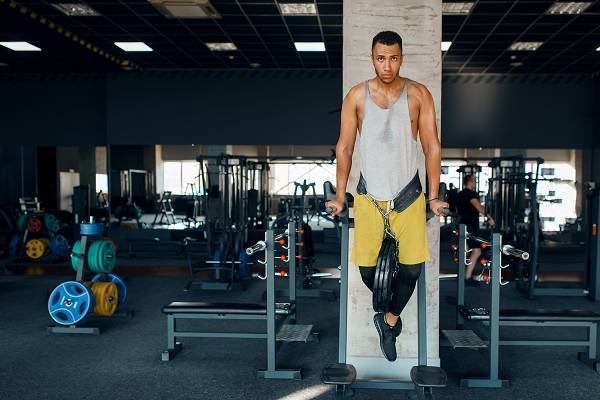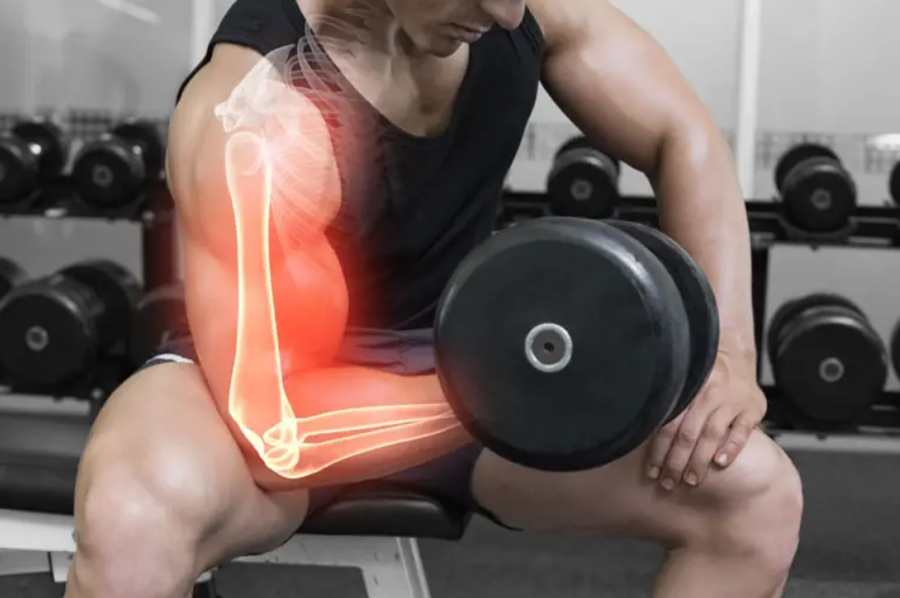When it comes to HIIT exercises, there are a few mistakes that people commonly make. This can lead to less than stellar results and even injuries. From not properly warming up to not cooling down, this post will take a look at some of the most common mistakes people make when doing HIIT exercises. It will also provide tips on avoiding these mistakes and getting the most out of your workouts! So if you have been thinking about adding HIIT to your workout routine, read this post first.
Contents
- 1 What Is HIIT?
- 2 Not Warming Up Properly
- 3 Not Pushing Yourself Enough
- 4 Trying To Complex Of Movements
- 5 Not Allowing For Proper Recovery Between Workouts
- 6 Going For Too Long Of Intervals
- 7 Resting For Too Long In Between Intervals
- 8 Not Having The Proper Fuel Before Starting
- 9 Not Cooling Down Properly
- 10 Avoid These Common Mistakes When Doing HIIT!
What Is HIIT?
HIIT, or high-intensity interval training, is an exercise that alternates between short bursts of intense activity and rest periods. HIIT can be performed with any activity, from running to weightlifting, and is an effective way to improve cardiovascular health and increase fat loss.
Studies have shown that HIIT can help to improve VO2max or the body’s oxygen uptake capacity and can also help to reduce the risk of heart disease. In addition, HIIT is a time-efficient way to exercise, as it can be performed in as little as 20 minutes. For these reasons, HIIT is a popular choice for people looking to get the most out of their workout.
Although HIIT can be a practical exercise, there are a few mistakes that people commonly make when doing HIIT exercises. These mistakes can lead to less than stellar results or even injuries. Here are some of the most common mistakes people make when doing HIIT:
Not Warming Up Properly
Though HIIT can be an extremely effective exercise, many people mistake not properly warming up before starting their HIIT routine. Warming up helps prepare your body for physical activity by increasing your heart rate and blood flow. It also helps to loosen your muscles and joints, reducing your risk of injury.
Without a proper warm-up, you may be more likely to pull a muscle or strain a tendon. So before you start your next HIIT workout, be sure to take some time to warm up properly. A few minutes of light cardio and simple stretches can make all the difference.
Not Pushing Yourself Enough
Another common mistake people make when doing high-intensity interval training (HIIT) exercises is not pushing themselves hard enough. HIIT is an extremely effective workout method, but only if you are working at a high enough intensity. Many people mistakenly think they can avoid working as hard during HIIT because the intervals are so short.
However, this is not the case – to see results from HIIT, you need to work close to your maximum effort for the entire workout. If you’re not sure you’re pushing yourself hard enough, ask a trainer or fitness expert for help. They’ll be able to guide you on how to ensure you’re getting the most out of your HIIT workouts.
Trying To Complex Of Movements
Another mistake people tend to make is trying to do too many complex movements. Because HIIT exercises are so demanding, it is important to keep the movements simple to avoid injury. For example, it is better to stick with a basic squat instead of a complicated jump squat.
Keeping the movements simple can ensure you get the most out of your HIIT workout and avoid injury simultaneously. Focusing on proper form and technique is also important – this will help you get the most out of your workout and prevent damage.
Not Allowing For Proper Recovery Between Workouts
Although HIIT can be an effective way to burn calories and improve cardiovascular fitness, it’s important to allow for adequate recovery between workouts. Otherwise, you risk overtraining and becoming injured. When you don’t give your body enough time to recover, you risk fatigue, joint pain, and other injuries.
In addition, your performance will suffer if you don’t allow for proper recovery. So if you’re doing HIIT exercises, take a day or two off each week to let your body recover. Your workouts will be more effective in the long run and reduce your risk of injury.
Going For Too Long Of Intervals
When it comes to HIIT exercises, one mistake to be aware of is going for too long intervals. Many people think they need to do longer intervals to get the most benefit from HIIT. However, research has shown that shorter intervals are more effective. Studies have shown that shorter intervals result in greater improvements in VO2 max.
In addition, shorter intervals have also been shown to improve your anaerobic threshold, which is the point at which your body starts to produce lactic acid. This is important because it means you can sustain higher intensity levels for a more extended period. So, keep your intervals short if you’re looking to get the most out of HIIT.
Resting For Too Long In Between Intervals
Interval training, or HIIT, is a great way to get a quick, intense workout. However, many people make the mistake of resting for too long between intervals. While it’s important to rest and catch your breath, resting for more than a minute or two between intervals can decrease your workout’s effectiveness.
The key is to find a balance between working hard and recovering correctly. With HIIT, a little bit of discomfort is normal – so don’t be afraid to push yourself! If you’re feeling winded, take a few deep breaths and then get back to work. Remember, pushing yourself hard and getting your heart rate up is the goal.
Not Having The Proper Fuel Before Starting
HIIT workouts are shorter than traditional workouts, but they’re also more intense. As a result, it’s important to ensure that your body has the proper fuel before you begin a HIIT workout. Otherwise, you could end up feeling dizzy, lightheaded, or nauseous. Eating a small meal or snack that includes carbohydrates and protein is the best way to fuel your body for a HIIT workout.
This will help to give you the energy you need to power through your workout while also helping to prevent muscle cramping. So before you start your next HIIT workout, be sure to take the time to fuel up properly.
Not Cooling Down Properly
It’s also important to cool down properly after a HIIT workout. Many people think they can stop abruptly and be done with it, but that’s not the case. Cooling down helps your body recover from the intense workout and prevents you from feeling dizzy or lightheaded. It also helps prevent injuries by gradually lowering your heart rate and blood pressure.
So how long should you spend cooling down? A good rule of thumb is to cool down for about 5 minutes for every 20 minutes of exercise. That means if you worked out for 40 minutes, you should spend about 10 minutes cooling down. Start walking slowly for a few minutes, then stretch all your major muscle groups.
You should feel your heart rate and breathe returning to normal by the end of the cool-down period. If you don’t cool down properly, you may experience cramping, nausea, or fainting. So take the time to cool down properly after your next HIIT workout.
Avoid These Common Mistakes When Doing HIIT!
HIIT is a great way to get a quick, intense workout. However, people often make a few mistakes when doing HIIT exercises. Whether going for too long of intervals or not cooling down properly, each error can decrease the effectiveness of your HIIT workout. So be sure to keep these tips in mind the next time you hit the gym! And remember, if you want to see the best results, make sure to keep your intervals short and push yourself hard.











